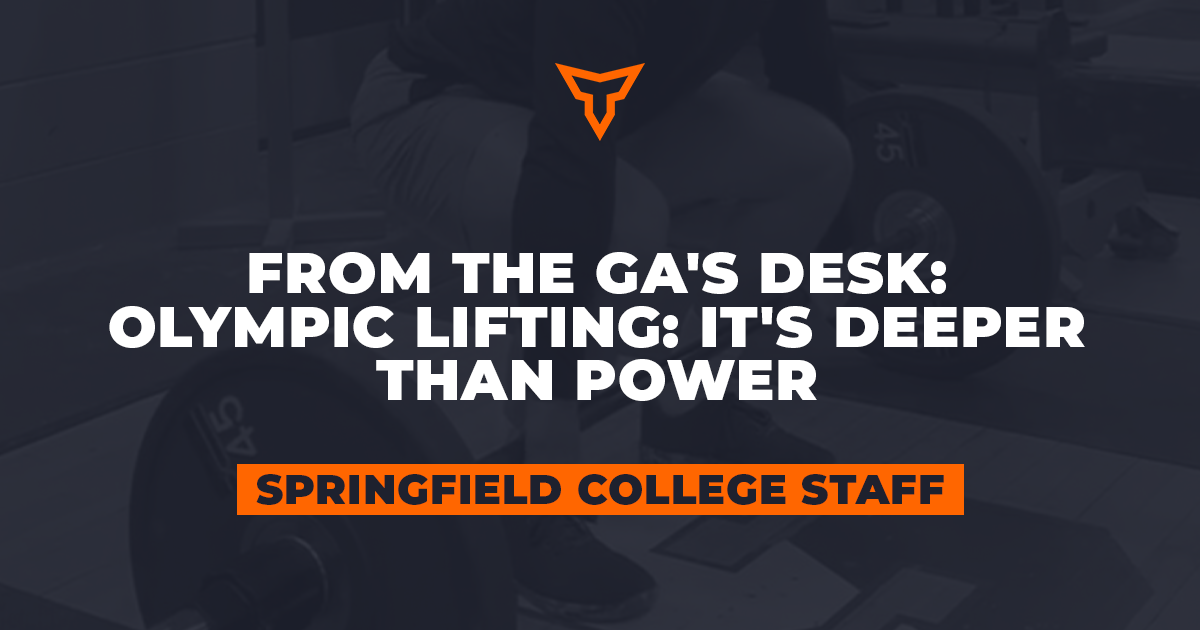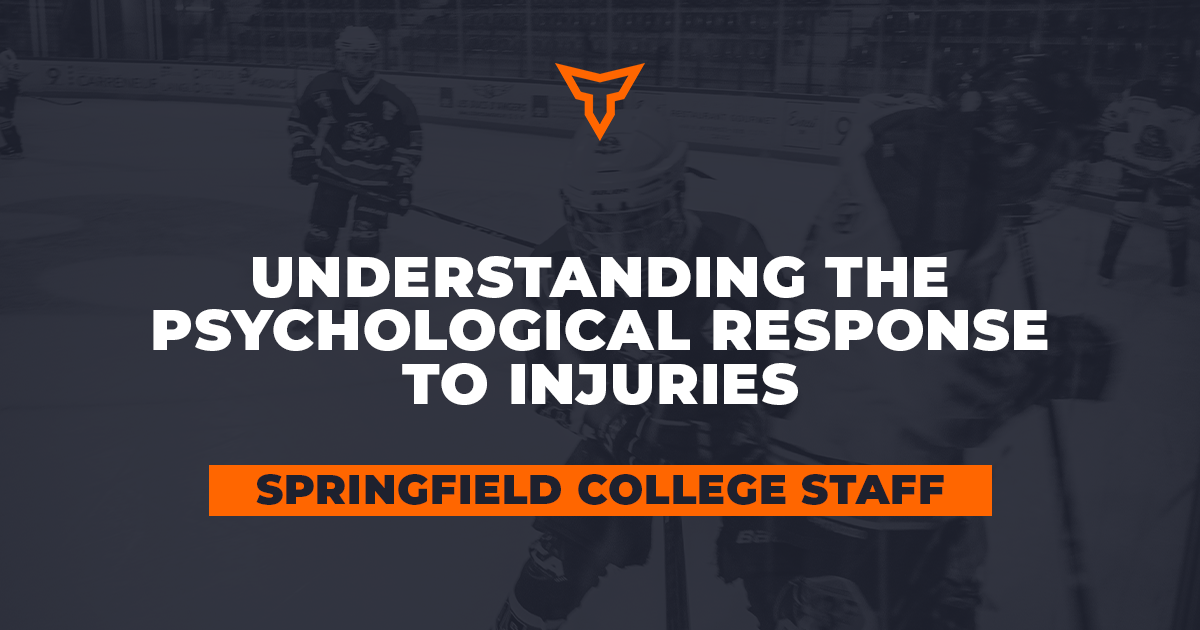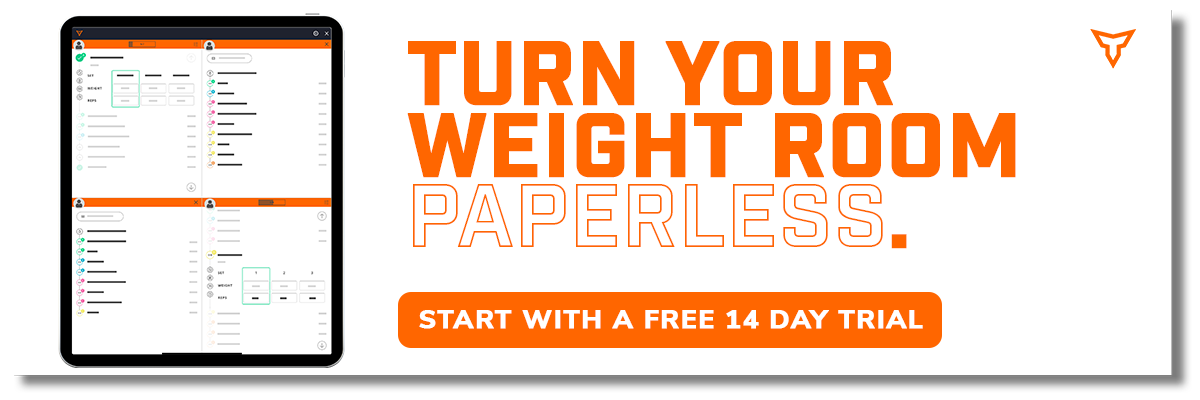From the GA's Desk: Implementing Ballet as a Game Changer
Author Lea Mitchell is a Strength & Conditioning GA at Springfield College.
Thinking about how you can reduce knee and ankle injuries? How about helping athletes become more coordinated? Perhaps ballet training is your answer; I know that it is mine. There are many positive applications for ballet as a cross-training and rehabilitation method for high-level athletes. I will share several in this article, so grab your tutu and get ready to become faster, stronger, and more efficient. While this might sound novel, I am not the first person to have thought about this graceful pastime as a prime form of cross-training and rehabilitation. Other professional athletes such as NFL’s Steve McLendon, AFL’s Harley Bennell, and NBA’s Jayson Williams have found success by adding ballet into their training routines.
Background
Aside from the more obvious reasons to take a ballet class, like greater flexibility and increased balance, there is a myriad of benefits that can be explored. Here’s a little bit about ballet, and my reasoning for using it as a cross-training method. The overall ballet aesthetic is to make the longest line possible while maintaining a picture of ease. To create this aesthetic, ballet dancers must have extreme core strength to control the ever-changing movements and power of their extremities. Dancers also have great strength through the posterior chain and in the intrinsic musculature of the core and feet. My main reasons for implementing ballet into future conditioning programming are to increase stability, prevent injury, increase neuromuscular coordination, and aid in healthier and more efficient landing mechanics. For this article, we will simply explore these.
Stability and Injury Prevention
For the purposes of this article, the “core” includes all muscles that attach or insert between the shoulder girdle and pelvis. All the muscles included have a large impact on the movement of the axial system. One of my favorite things to focus on as a coach is core development, and ballet is a great way to get those gains. A strong core is the keystone of an athlete’s foundation. It provides stability, and by doing so helps to prevent injuries.
Let me give you an example. The gluteus medius is an external rotator muscle of the hip. The gluteus medius attaches to the pelvis and is therefore categorized as a core muscle. A ballet dancer actively uses this muscle to keep the legs” turned out”, even while jumping and changing directions. Ballet is very athletic and requires a lot of muscular endurance for long rehearsal and performance days. The stabilizing muscles in the hip can be overlooked by coaches since they are not the primary source of explosive power. To a ballerina, the gluteus medius is primary as the muscle is isometrically held for a large majority of the time. A ballerina that lacks strength in the hip external rotators is prone to injury and quickly out of a job.
So, how can training this muscle like a dancer help other athletes? Using ballet to increase the strength and endurance of the stabilizing hip musculature, such as the gluteus medius, on cross-training days can lead to decreased knee valgus. Cutting maneuvers and quick changes in direction are prime activities for knee injuries such as ACL tears. Increasing the strength of the hip's external rotators and abductors can reduce knee valgus, more commonly referenced as knock knees. Stronger and more consistent alignment in the lower extremities results in fewer knee injuries. In other words, incorporating ballet techniques that strengthen the gluteus medius improves the alignment of the lower extremities, decreases knee valgus, and reduces an athlete’s risk of ACL tears.
Ballet dancers isometrically hold another very important muscle. The transverse abdominis is the deepest level of your core. This muscle is like a big belt that attaches to your spine. It is also a primary muscle used during the dancer’s “drawing in” technique. Keeping this intrinsic muscle strong keeps your spine supported and can reduce injuries caused by torque. Ballet dancers actively train their breath and core to work together. The “drawing in” technique is consistently used as dancers focus on breathing out against “the work”. “The work” is typically when an athlete is working against gravity the most. Every time the dancer breathes in and out using this technique, the transverse abdominis is engaged, it strengthens, as does overall trunk stability (over time). Increased trunk stability aids in sports performance; the stronger and more compact the core is, the more control an athlete has over direction changes and the less risk of injuries caused by torque. Athletes that are injury-prone typically have a muscle imbalance; implementing core stability exercises lessens the likelihood of injury stemming from muscle weakness.
Neuromuscular Coordination and Landing Mechanics
Ballet keeps most, if not all, the bodyweight in the balls of the feet which greatly helps control changes of direction. This allows the dancer to move from one foot to the other quickly and with coordination and grace. A modified ballet class or ballet rehabilitation program, applied properly could strengthen athletes' feet, ankles, and supporting musculature. A cross-training program can incorporate several exercises that focus on foot articulation. These can be as simple as towel scrunches or a foot doming exercise.
The program can later apply that articulation into proper landing mechanics. A dancer focuses on maintaining contact with the floor for as long as possible and as soon as possible. This means the dancers are rolling through the floor every time they leave the floor and every time they land. For example, basketball players tend to be more susceptible to ACL tears, and many of those injuries occur when landing from a layup. A ballet exercise called “Fondu” is directly applicable. Fondu is a French term that means “to melt” and the basis of the movement is to stand on one leg with both legs externally rotated at the hip. A dancer then coordinates both knees to bend and stretch at the same time. This movement increases the strength of the hip on the supporting side, increases neuromuscular coordination, and when advanced up to the toes and then to a jump incorporates the rolling through the foot concept to aid in landing mechanics.
Now as a basketball player begins his descent from the net, he reaches with his toes and catches his weight progressively instead of suddenly. As larger muscles are stimulated to help with the landing, the external rotators and abductors of the hip keep the knee over the toes. Further, if the basketball player can keep his weight on the balls of his feet he can now shift to change direction down the court faster. Properly applied ballet exercises can help progress an athlete into more efficient landings and better weight distribution. The athletes' proprioception and coordination should also begin to improve as their weight distribution and strength improve.
Practical Applications
Implementing a modified ballet class into an annual conditioning program can help produce a well-rounded athlete. The class would need to be created and appropriately modified by a strength and conditioning coach with in-depth knowledge of classical ballet training, if not a degree in pedagogy. A modified class should be used in the off-season for a sport and the curriculum should be made after a review of a sport/team's needs analysis. Ballet has a set order of movements and the variations are in the pattern and combinations. Modifications would need to be made in the level, tempo, pattern, and coordination of the exercise. Further, in order to keep power as a priority for certain athletes, the order of class would need to be reorganized.
Traditional Ballet Class: All combinations incorporate many other ballet movements. This template is simply an outline of a class structure. Most ballet terminologies are verbs for example, “Plié” means “to bend” and it is used to bend the knees in any and all other ballet movements. The variations in a class are innumerable.
|
Barre ~50 min |
Center ~40 min |
|
Plié -All 5 positions |
Battement Tendu and Port de Bra |
|
Tendu-From 1st position |
Temp lié and Chassé |
|
Tendu-From 5th position |
Adagio-Arabesque and Retiré Promenades |
|
Dégagé’s |
Tombé and Pirouettes |
|
Pas de Cheval and Piqué |
Petite Allegro-Changement and Soubresaut |
|
Rond de Jamb (a terre and en L'air) en Dehors and en Dedans |
Échappé and Pas de Bourrée |
|
Frappe and Simple Coupé |
Glissade and Assemble |
|
Fondu en Croix |
Sissone and sauté |
|
Développé and Envelope-Adagio |
Grande Allegro-Jeté and sautechat |
|
Grand Battement |
Coda |
|
Stretch |
Reverence |
I would recommend a modified class 2 times per week for 1 hour during the off-season. I would further recommend that strength coaches with no history of classical ballet training not attempt to employ a class by themselves. Ballet can be aggressive on the joints if not taught correctly and can have a negative effect on a team if not modified properly. Many ballerinas obtain a personal training certification once they have retired. Hiring a dancer with a certification and working with them to understand the needs of the team would be a safe and effective way to incorporate ballet into a training program.
Conclusion
A modified ballet class or ballet exercises can be combined with a conditioning program to benefit both the athlete and the team. This article touches on the tip of the iceberg of what ballet can do for high-level athletes. A traditional ballet class has a specific order, the exercises chosen to be incorporated into a training program would need to be chosen by a ballet-trained coach, progress appropriately, and be specific for the athlete. The exercises given would also need to be sport specific and in some cases sport position-specific. Given proper coaching, with an understanding of both strength and conditioning as well as ballet pedagogy, athletes can find added success and longevity in their sport.
Subscribe to our blog
Subscribe to receive the latest blog posts to your inbox every week.
Related posts

From the GA's Desk: Olympic Lifting: It's Deeper than Power

How Early Sport Specialization is Killing Youth Athlete Potential


